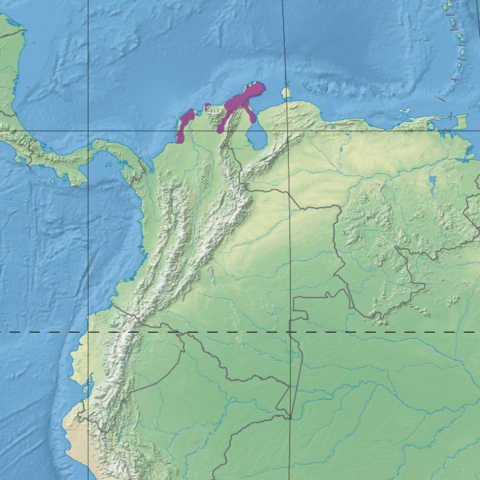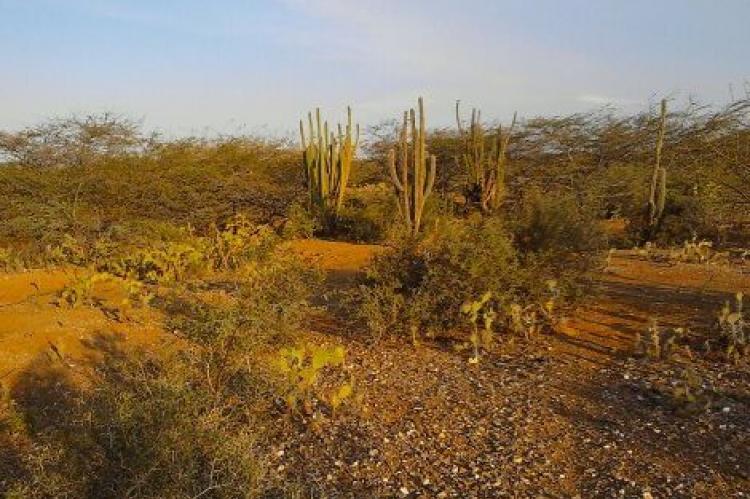The Guajira-Barranquilla Xeric Scrub: An Arid Wonderland on the Caribbean Coast
The Guajira-Barranquilla xeric scrub ecoregion is a unique and remarkable arid habitat in northern Venezuela and Colombia. It is a bird center of endemism with thorn scrub, succulent vegetation, and dry-adapted flora and fauna that sets it apart from the area's lush tropical landscapes.
The Guajira-Barranquilla Xeric Scrub: An Arid Wonderland on the Caribbean Coast
Nestled along the Caribbean coastlines of northern Venezuela and Colombia, the Guajira-Barranquilla xeric scrub ecoregion is a unique and remarkable xerophytic (dry-adapted) enclave within the Neotropics. This arid habitat, proposed as a bird center of endemism, is dominated by thorn scrub and succulent vegetation, starkly contrasting the lush tropical landscapes that characterize much of the region. Spanning three distinct enclaves, the Guajira-Barranquilla xeric scrub ecoregion is a testament to South America's incredible diversity of ecosystems.
Geographic Setting and Landscape Features
The Guajira-Barranquilla xeric scrub ecoregion comprises three distinct enclaves, each with a unique geographic setting and landscape features.
1. The Guajira Peninsula Enclave: This is the largest of the three enclaves. It encompasses the Guajira Peninsula, the northernmost point of South America, extending into northwestern Venezuela and northeastern Colombia. The enclave stretches southward between the Sierra Nevada de Santa Marta and the Serrania de Perijá mountain ranges.
2. The Santa Marta Bay Enclave: Located east of Santa Marta Bay in Colombia, this is the smallest of the three enclaves, situated north of the Magdalena department.
3. The Caribbean Coastal Enclave: This enclave stretches along the Caribbean Sea, north of the Cordoba, Sucre, Bolivar, and Atlantico departments in Colombia.
The landscape of the Guajira-Barranquilla xeric scrub ecoregion is characterized by hills, such as the Serranía de Macuira, which reaches an elevation of 900 meters (3,000 feet) and traps some of the trade winds, causing mist formation. The ecoregion also features lowlands (llanuras or plains) and several rivers, with the Magdalena River being the largest. Smaller rivers, such as the Guachaca, Buritaca, Don Diego, Palomino, Ancho, Dibulla, and Corual, originate in the Sierra Nevada de Santa Marta and flow toward the Caribbean Sea through this ecoregion.
Climate and Aridity
The Guajira-Barranquilla xeric scrub ecoregion is characterized by an arid climate, with the Serranía de Macuira mountain range creating a rain shadow effect that limits precipitation in the region. This dryness has given rise to the unique xerophytic vegetation that dominates the ecoregion, consisting primarily of thorn scrub, cacti, and other succulent plants adapted to the arid conditions.
Flora and Fauna
Despite its arid character, the Guajira-Barranquilla xeric scrub ecoregion boasts a diverse array of plant and animal life, many of which are endemic or restricted to this unique habitat.
Flora
The Guajira Peninsula alone is home to an impressive 465 plant species across 255 genera and 109 families. The dominant vegetation consists of thorn trees, succulents, and small evergreen forests, including mesquite and leguminous tree species. Common plant genera in the ecoregion include Acacia, creosote, cacti, and various flowering plants, shrubs, and small trees.
Fauna
The ecoregion is a haven for reptile diversity, with at least 34 species representing 21 genera and ten families, including the endangered green iguana, red-footed tortoise, and the endemic Dahl's toad-headed turtle. Amphibian diversity is also notable, with 32 species from 17 genera and seven families.
Avian diversity is a highlight, with over 180 bird species representing 140 genera and 50 families, many of which are endemic or restricted to the arid lowlands of the Guajira Peninsula and northeastern Colombia. Notable bird species include the endemic pygmy swift, buffy hummingbird, black-backed antshrike, and the iconic Caribbean flamingo.
The Guajira-Barranquilla xeric scrub is a critical habitat for a large community of Caribbean flamingos (Phoenicopterus ruber), making it a significant site for conserving this charismatic species.
Conservation Status and Protected Areas
Despite its ecological significance, the Guajira-Barranquilla xeric scrub ecoregion has been heavily impacted by human activities, including agriculture and grazing, which have altered the natural landscape. However, efforts are underway to protect and preserve this unique ecosystem.
Two notable protected areas exist within the ecoregion:
1. Tayrona National Natural Park encompasses mangroves and xeric scrubs, providing habitat for approximately 100 mammal species, 200 bird species, and 31 amphibian species.
2. Macuira National Natural Park is home to isolated populations of caiman, ocelot, margay, howler monkeys, and seven endemic subspecies of birds; this park plays a crucial role in preserving the region's biodiversity.
Continued conservation efforts and sustainable management practices will ensure the long-term protection of the Guajira-Barranquilla xeric scrub ecoregion, safeguarding its unique flora and fauna for future generations.

Map depicting the location of the Guajira-Barranquilla xeric scrub (in purple).
